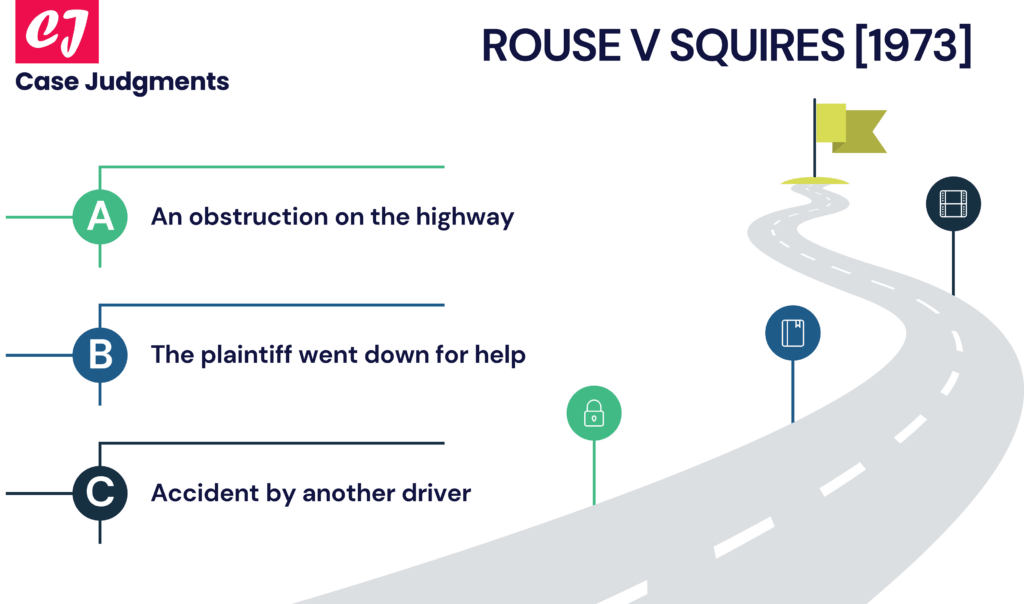Case name & citation: Knightley v Johns and others [1982] 1 WLR 349; [1982] 1 All ER 851
- Court and jurisdiction: Court of Appeal (Civil Division), England and Wales
- Decided on: 27 March 1981
- The bench of judges: Lord Justice Stephenson, Lord Justice Dunn and Sir David Cairns
- Area of law: Causation; novus actus interveniens
What does the case deal with?
Knightley v Johns [1982] is a UK tort law case concerning the issue of whether an intervening event breaks the chain of causation between the defendant’s action and the damage caused.
Facts of the case (Knightley v Johns)
The defendant was driving negligently inside a one-way highway tunnel and his car overturned in the middle of the tunnel. A bystander made a call to the police, which then sent a number of officers to the location of the accident. A police inspector arrived at the accident scene from the entrance of the tunnel but before driving in, he forgot to seal off the tunnel to prevent traffic, as was required by written operational instructions. He ordered two police officers (one was the plaintiff), both of whom were on motorcycles, to drive against the flow of traffic to the entrance of the tunnel so that it could be closed to traffic. In doing so, the plaintiff got hit by an oncoming car. The plaintiff filed a lawsuit against the defendant, among others, for the damages that resulted from his collision with the approaching car.
The defendant argued that the actions taken by the police in responding to the emergency, in particular the instructions given by the police inspector, had “broken the sequence of events” between his conduct and the damage that was caused to the plaintiff.
Issue that arose
Who was responsible for the officer’s injury, and would the instruction given by the police inspector be considered a novus actus interveniens that would break the chain of causation?
Judgment of the Court in Knightley v Johns
The Court of First Instance found that the defendant was liable for the injuries sustained by the plaintiff. But the Court of Appeal overturned the decision of the Court of First Instance. Stephenson LJ examined the facts and concluded that the police inspector had been negligent and that his negligence contributed to the plaintiff’s injuries.
Even though it is possible to say that the arrival of police officers in the tunnel as a result of the original incident was a foreseeable event, however, the negligent order by the police inspector to drive down a one-way tunnel into opposing traffic was not foreseeable. Thus, the order given by the inspector broke the chain of causation.
It could not be said that the damage was a ‘natural and probable’ cause of the defendant’s conduct.
List of references:
- https://www.casebooks.eu/documents/tortLaw/heading4.3.3.pdf
- https://www.lawteacher.net/cases/knightley-v-johns.php
You might also like:
More from tort law:




